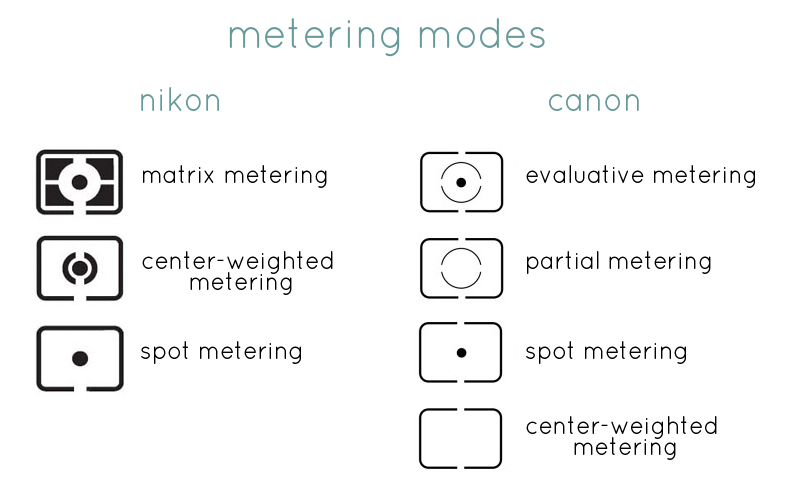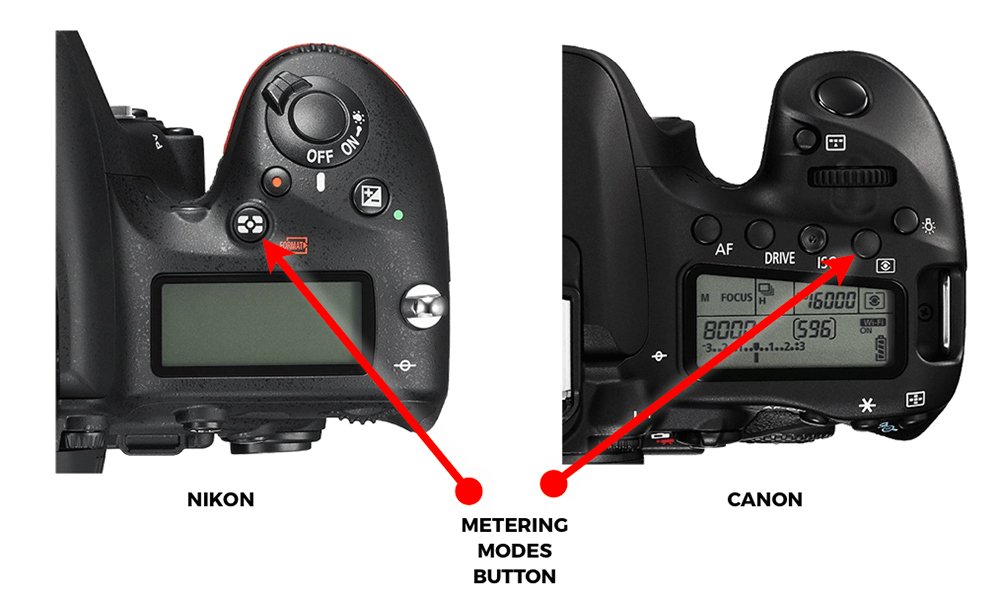Demystifying Camera Settings: What is Metering Mode?
Introduction
Taking stunning photographs requires more than just a high-end camera. It demands a sound understanding of your camera's various settings and features. Among these, the camera's metering mode is a critical setting that greatly influences the quality of your pictures. This article will explore the metering mode, its significance in photography, different types, and how optimizing metering modes can improve your shots.
What is Metering Mode in Camera?
If you have embarked on the journey splashing out on a high-end camera, you'll want to know about the specific settings and features that are going to enhance your skills and photography experience. Consider 'Metering Mode', a crucial setting that works as the torchbearer to the realm of high-quality images.
- Metering Mode: Simplifying The Complex
Assimilating the plethora of technical elements can be daunting for a beginner, but understanding 'Metering Mode' can help drive your artistic vision in photography. So, what does it all mean? Let us decode 'Metering Mode' for you.
- Definition: The metering mode is your camera's compass, guiding it to gauge the light within a particular frame, consequently determining the apt exposure for your photo.
- Functionality: This unique system computes the amount of light required to display various parts of an image flawlessly. In order words, it's your safeguard system to avoid overexposed (too bright) or underexposed (too dark) photos.
- Role: The metering mode serves as the boatman rowing your artistic desires to its shore; it's all about gaining optimal creative control over your images' exposure.
While embracing photography, you'll realize that taking fantastic photos is succumbing more to instinct than just relying on your camera's functionality. Your comprehension of these settings, such as the Metering Mode, will significantly influence your final frame's exposure and quality.
Why is Metering Mode Crucial in Photography?
The metering mode in a camera is far from a mere setting; its importance cannot be stressed enough in capturing splendid photographs. Here are some reasons why it is critically significant:
1. Determines Exposure: The exposure of an image, which is fundamentally determined by the metering mode, serves as the backbone of a photo’s quality. It can substantially influence the visual impression made by the image.
2. Discloses Details: Correct exposure can effectively reveal details of the subject sharply and distinctly. This helps in ensuring the clarity and visual prominence of the subject in the image.
3. Sets Mood: Interestingly, the exposure of a photo does not just present its subject, but it also firmly sets the mood and emotion conveyed through the photograph. Overexposure can convey a buoyant mood while underexposure can portray a more dramatic and intense sentiment.
4. Enhances Adaptability: Utilizing metering modes helps photographers become adaptable to different lighting conditions. This paves the way for capturing well-exposed photographs even in challenging lighting situations.
In essence, mastering the use of metering modes provides you the capability to combine technique and artistry, ultimately leading to the capture of visually captivating images.
What are the Fundamental Types of Metering Modes?
Understanding how your camera interprets light and shade is essential to capturing the perfect photograph. Here, we delve into the three core metering modes - Spot Metering, Center-weighted Metering, and Evaluative or Matrix Metering - to provide you with an understanding of when and how to use them effectively.
Spot Metering Unveiled: Purpose and Use
Spot Metering is a precise technique used when dealing with a particular focus point. It takes into account merely 1-5% of the frame, letting you capture specific portions in a given scene under unique lighting conditions.
Use Spot Metering when:
- Your frame contains extreme lighting variations

- The subject is dramatically darker or lighter than its backdrop

- You are shooting very strong backlit scenes
To use Spot Metering, highlight your subject in the viewfinder, take a meter reading, and lock in your exposure.
An In-depth Look at Center-weighted Metering
Center-weighted Metering is the "middle-ground" metering mode. While it considers the whole frame, it attributes higher importance or weight towards the center, making it an ideal choice for portraiture or macro photography.
Center-weighted Metering is ideal:
- When the subject is located in the middle of the frame
- During portrait photography where the subject's face is of major focus
To utilize this, frame your subject close to the center to ensure the camera exposes for your main point of interest.
Evaluative or Matrix Metering Explained and its Advantages
Evaluative or Matrix Metering revolutionizes the game with its ‘divide and conquer' approach. It breaks the frame into multiple zones, considering each zone's light levels separately before producing an overall balanced exposure.
Advantages of Evaluative or Matrix Metering:
- Effective for landscapes or evenly lit scenes
- Helpful in dealing with complex lighting situations
This mode automatically analyzes the scene for you, making it an ideal 'go-to' mode, especially if you are new to photography or uncertain about lighting conditions.
By understanding these modes, you have a sturdy handle on your camera's response to lighting, empowering you to take control and capture the best possible shot under any circumstances.
Do Different Metering Modes Affect Photo Quality?
Undeniably, the type of metering mode you use on your camera has a significant influence on the quality of your images. Each mode derives a different calculation for light evaluation, affecting how well your photo's details and mood are captured. Using the wrong metering mode could lead to underexposed or overexposed sections in your picture, causing a loss in detail and potentially ruining the shot's overall aesthetic appeal.
Let's break down how each metering mode can deliver unique results and impacts on your photographs:
Spot Metering
Using Spot Metering can bring about striking contrasts and dramatic lighting in your photos, especially if your subject is lighter or darker than its surroundings. This mode works exceptionally well for backlit subjects or those under spotlight in an otherwise dark environment. However, if you use Spot Metering in evenly lit conditions or expansive scenes, it could result in extreme overexposure or underexposure in parts of your image due to its highly focused light reading.
Center-weighted Metering
The Center-weighted Metering mode prioritizes the frame's center by measuring the light there more than the edges. This often results in an exposed subject against a darker background, creating a natural vignetting effect. It works marvelously for centrally composed portraits. Nevertheless, if your subject is off-center or the scene has uneven lighting, the use of this mode could make your picture appear off-balance, with under- or overexposed sections.
Matrix or Evaluative Metering
Matrix or Evaluative Metering scans the entire photo frame and evaluates light in small zones separately. It analyses each zone's brightness, contrast, and distance to determine the best exposure. This mode handles complex lighting situations effectively, such as landscapes with varying light levels. However, it might not work as well in situations where you want to emphasize a single subject with a significantly different light level compared to the rest of the scene.
Overall, the correct choice of metering mode is not only crucial for capturing precise lighting but also for influencing the emotive resonance and overall visual success of your photos. It emphasizes why understanding each mode thoroughly is exceptionally crucial, as using the right mode for the right situation allows your photographs to come alive in ways that mirror your artistic vision.
How to Improve Photos with Proper Usage of Metering Modes?
The art of capturing stunning photographs can be significantly boosted with the proper use of metering modes. They can prove to be some of your most potent tools in the photographic toolbox. A good understanding of which metering mode to use under various light conditions can uplift your photos. Here's how:
* Spot Metering: Perfect for use when your subject's light conditions significantly contrast the surroundings. For example, if your subject is in a spotlight against a dark background, Spot Metering will ensure your subject isn't overexposed or washed out.
* Center-Weighted Metering: This mode is ideal when your subject is in the center of the frame or when you prefer to give it more exposure than the rest of the scene. It's great for portrait photography, where your subject (person) is in the center of the frame.
* Evaluative or Matrix Metering: Best used in complicated or variable lighting situations. This metering mode breaks down your frame into various zones and measures light in each area. It then computes an overall exposure based on these measurements. This mode is beneficial for complex scenes that require a balance of exposure throughout the image, such as landscape photography.
Don't forget: practice makes perfect. The more you test out these metering modes, the better you'll understand when to use each one, and the more your photography will improve. So, why wait? Grab your camera, choose the appropriate metering mode, and explore new depths of photography!
Conclusion
The choice of the correct metering mode is critical for taking well-exposed photographs. Understanding its types and knowing when to use each can significantly improve your photography skills. Remember, the end goal is to utilize the metering modes to enable your camera to capture images as close as possible to how your eyes perceive them.
Related FAQs about what is metering mode on a camera
What situations are different metering modes best suited to?
Spot Metering is best in high-contrast lighting, or when the subject is dramatically lighter or darker compared to the surroundings. Center-weighted Metering is optimal for scenarios where the object is stationed in the frame's center, like portrait photography. Evaluative or Matrix Metering is perfect for complex or variable lighting situations such as landscapes.
How can mastering metering modes improve my photography skills?
Mastering metering modes allows better control of your camera's exposure levels. It empowers you to take well-exposed photos under various lighting conditions. You'll be able to correctly represent the subject's details and set the mood of your images more accurately, significantly improving your photography skills.
Can the choice of metering mode affect the brightness and darkness in a photo?
Yes, the choice of metering mode can tremendously impact the brightness and darkness in a photo. Different modes interpret light differently, leading to varying degrees of brightness and darkness. Using the right metering mode helps in averting overly bright (overexposed) or overly dark (underexposed) shots.


